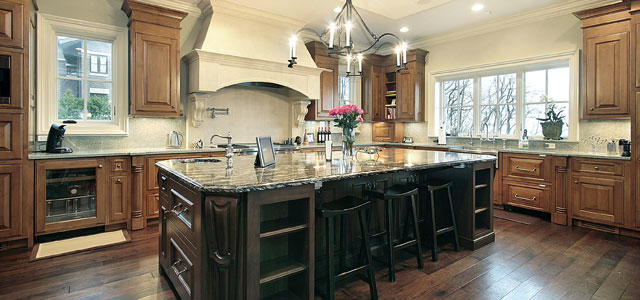If you are tired of your drab, dull, uninviting kitchen, chances are you’re gearing up for a remodel. While there are several important decisions to make regarding the flooring, cabinets, appliances, etc., one of the most important is the type of counters you install. After all, regardless of the size of your kitchen, the counters are a huge focal point. As a result, you need to find a durable, aesthetically pleasing option for the space, at an affordable price.
Two options that are extremely popular for modern homes and kitchens include Caesarstone and granite. Both are great options for your kitchen; the question is, which one is right for you? Even though granite counters and floors are beautiful and durable, some prefer the look of Caserstone.
If you find yourself facing this dilemma, it is a good idea to learn a bit about each option. When you are fully informed, you are prepared to make an educated decision regarding the countertop surface right for your home.
Caesarstone vs. Granite Maintenance Requirements
Caesarstone, made from 93 percent quartz particles and hard resins, is an engineered stone. The resins serve as a binding for the stone particles. The resulting product is extremely dense; much denser than granite. This means the surface doesn’t absorb stains, colors, or odors.
While granite is not as dense, it doesn’t require much maintenance, either. The key to keeping it looking immaculate is to wipe up any spills right away. This minimizes the potential of long-term damage to the surface of the granite due to the porous nature of this material.
Textural and Color Differences
Both Caesarstone and granite can enhance the look of a kitchen. They are both sold in several colors, patterns, and textures. Quartz countertops have a pigment that is added during the manufacturing process and, as a result, the color is present throughout the countertop. Granite comes in natural styles and colors, created miles inside the earth’s surface.
Many granite lovers state there is no way to replace the natural look offered by granite. However, those who love Caesarstone appreciate the uniformity of the counters available. Regardless of which option you like, there is no question that both are aesthetically pleasing and can enhance the look and appeal of a kitchen.
Durability of Caesarstone and Granite
Both granite and Caesarstone can resist heat, gouges, dents, and scratches. With proper care and maintenance, both surfaces can last a lifetime. However, it is important to keep in mind, there are some differences you need to fully understand before making a purchase decision.
While both granite and Caesarstone come from natural stone, Caesarstone goes through additional manufacturing process before the final product is created. Even though each material is exceptionally hard, slabs of quartz are heavier, while granite slabs are harder.
Look and Uniformity
The natural textures, colors, swirls, and other features of granite are truly stunning. In fact, this is a look that is virtually impossible to match. However, granite is typically not uniform in the way it looks. If you desire that uniformity in color, pattern, texture, etc., then Caesarstone is the better option. If you prefer the beautiful, unique, and natural look of granite, then this is the right material for you.
What Countertop Surface is Right for Your Home?
This is somewhat of a loaded question; however, one to think about carefully. There is no question new countertops are quite an investment so being sure about the type you want is a must. Some things to consider when choosing between Caesarstone and granite include:
- Do you prefer a natural or uniform look?
- Do you prefer a surface that goes through additional manufacturing steps?
- Do you prefer a certain material – quartz or granite?
While the debate between Caesarstone and granite is one that is likely to continue, most designers agree the best option for you is the one that meets your needs and the stylistic preferences you have. In most cases, the best way to figure out what you want is by looking at samples of each stone. Feel the surface, look at the color consistency, and at this point, you can make a decision regarding what countertop material is right for you. Don’t jump into a purchase; think about it carefully to get what you really want.


